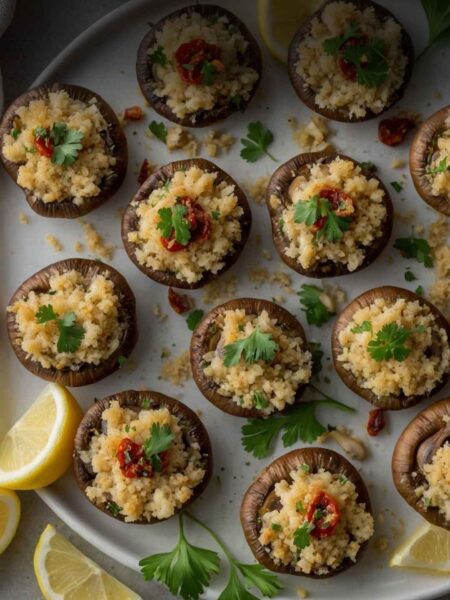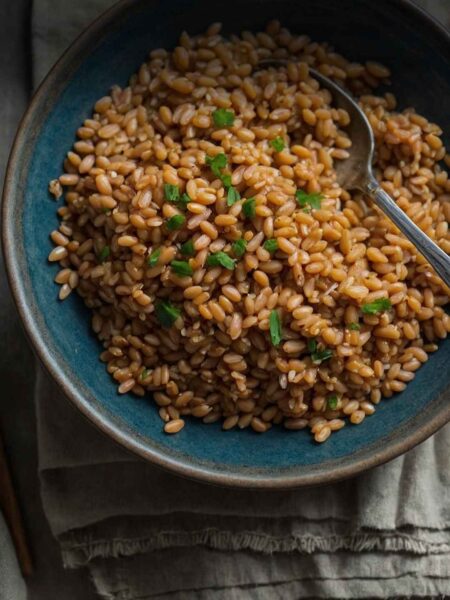Before diving into the magic of roasted cauliflower, let’s highlight some stellar companions for this dish. Why? Because the right pairing can elevate your dining experience from great to unforgettable. Roasted cauliflower holds its own beautifully alongside:
Grilled Chicken: Its subtle flavors balance the savory notes of chicken, making for a delightful meal.
Quinoa Salad: The crunch of the cauliflower complements the fluffy texture of quinoa, adding a nutritious punch.
Chickpea Curry: The earthiness of chickpeas plays nicely with the roasted flavors, creating a harmonious mix.
Pasta Dishes: Whether it’s a creamy Alfredo or spicy marinara, roasted cauliflower adds color and texture to your plate.
With these suggestions in mind, let’s delve further into the world of roasted cauliflower!
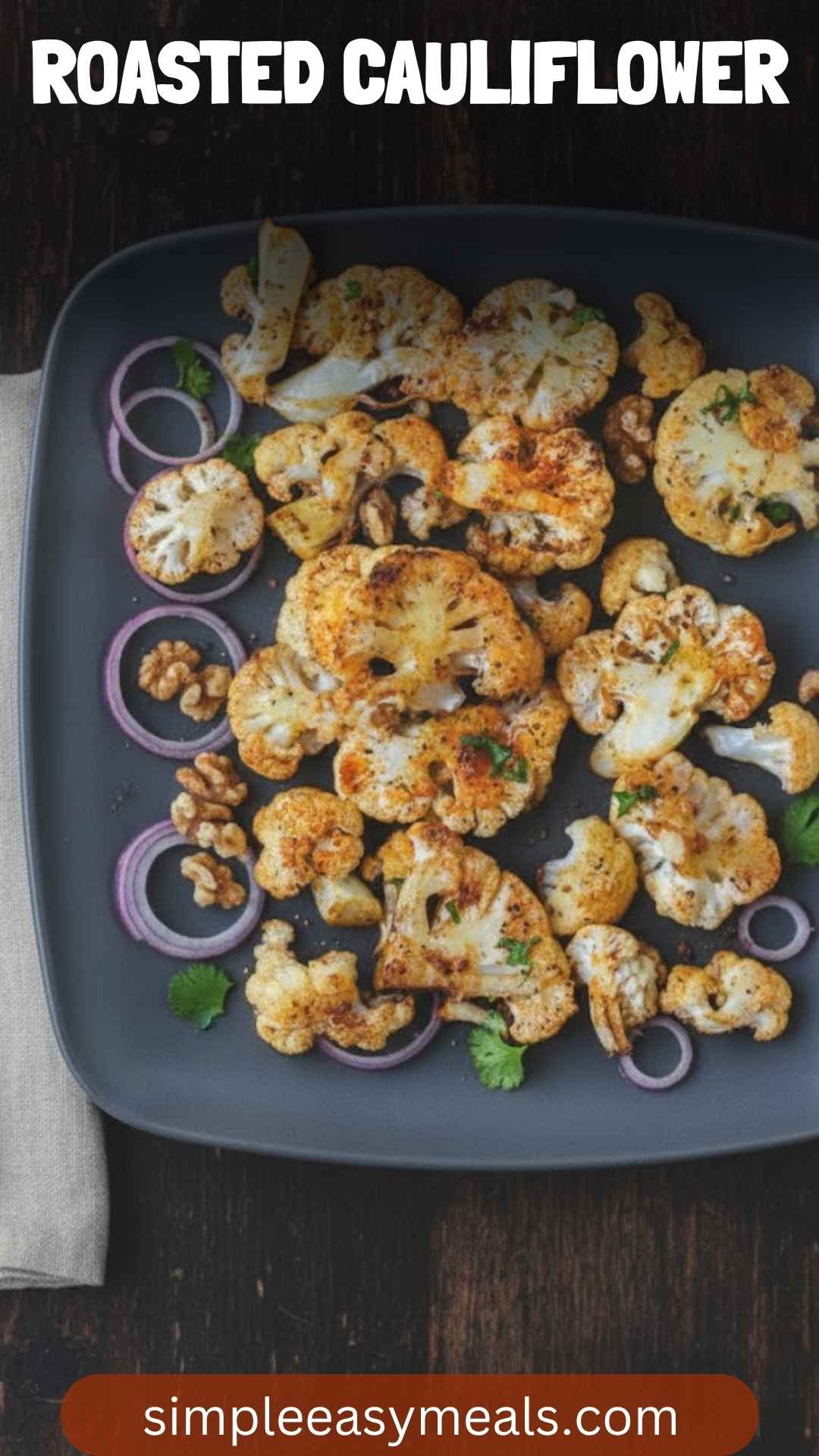
What is Roasted Cauliflower?
Roasted cauliflower is simply cauliflower florets that have been seasoned and cooked in the oven. The process brings out a deep, rich flavor that’s hard to resist. The basic steps are straightforward—toss it with oil, season, and roast until golden brown.
But as I learned through trials in my own kitchen, social gatherings enhance the enjoyment. With a few tweaks, it can become your go-to dish.
Why This Recipe Works?
So, what’s the secret sauce behind this recipe? First, it’s all about maximizing flavor. Roasting caramelizes the natural sugars in the cauliflower, resulting in a delectable, nutty taste. The addition of spices like garlic powder and smoked paprika transforms it into something extraordinary.
Data shows that roasting veggies boosts their antioxidant content, making this dish not just tasty but also nutritious. According to a 2018 study published in the “Journal of Nutritional Science,” roasting enhances the bioavailability of certain phytochemicals. This means you’re not just enjoying a side; you’re giving your body a boost with each bite.
What You’ll Need to Make This Dish
To prepare your roasted cauliflower, gather these simple ingredients:
1 medium cauliflower, cut into small florets or ½-inch thick “steaks”
2 tablespoons extra-virgin olive oil
2 tablespoons unsalted butter, melted
½ teaspoon kosher salt (or adjust to taste)
¼ teaspoon freshly ground black pepper (or to taste)
½ teaspoon garlic powder
¼ teaspoon smoked paprika
½ teaspoon dried thyme
1 teaspoon lemon zest
If you keep your pantry stocked with these staples, you’ll find this dish easy to whip up whenever the craving hits!
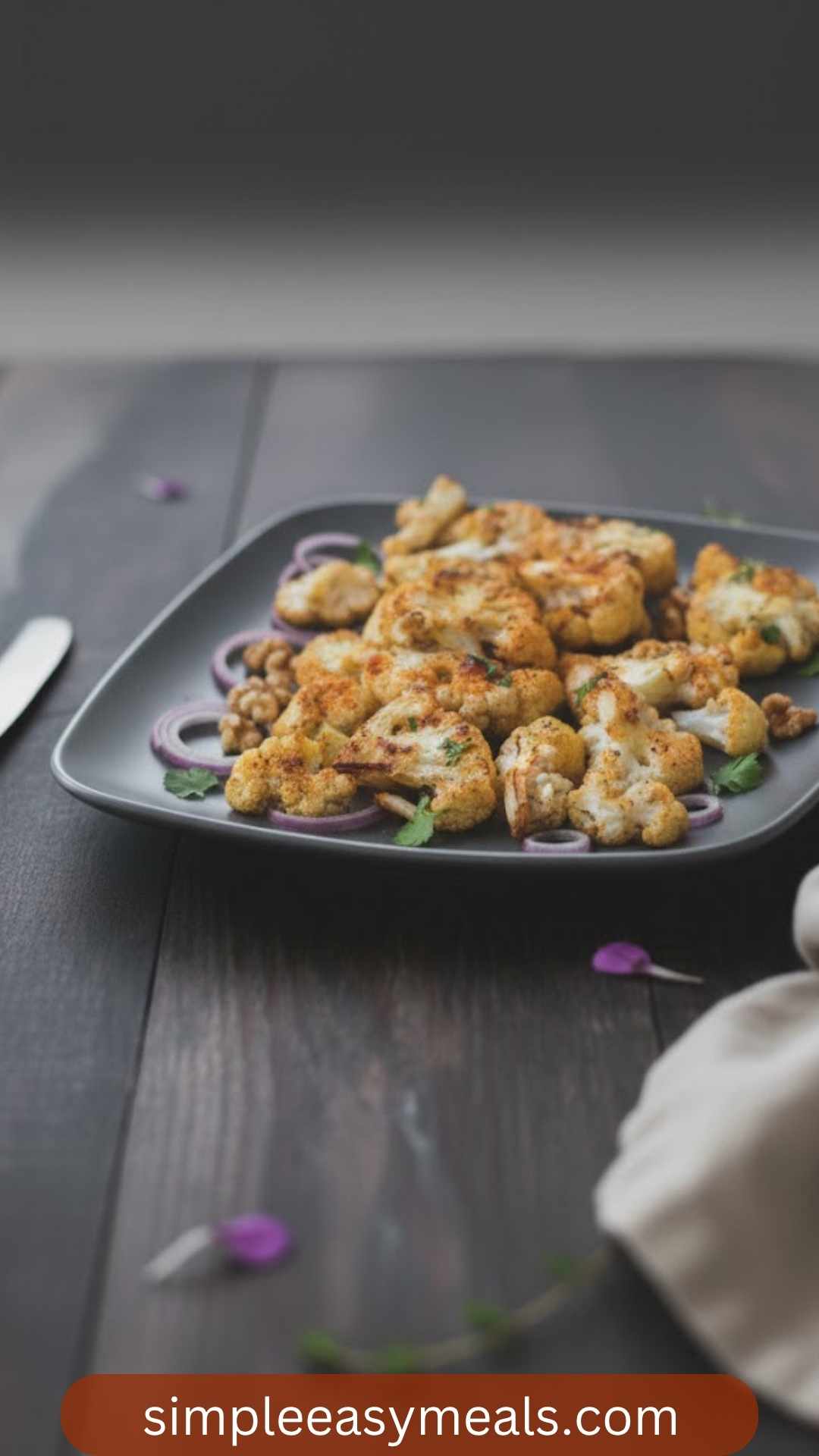
How to Make Roasted Cauliflower
Before diving into the detailed steps, let’s do a quick overview. Making roasted cauliflower is simple: prepare your cauliflower, season it well, and roast it to golden perfection. That’s it. Now for the fun part—let’s break it down step by step!
Step 1: Preheat the Oven
Start by preheating your oven to 425°F (220°C). A hot oven is crucial for roasting cauliflower to achieve that delicious caramelization. It’s the first step towards goodness!
Step 2: Prepare the Cauliflower
While the oven heats up, grab your cauliflower. Cut it into small florets or thick “steaks,” depending on your preference. Make sure they’re roughly the same size for even cooking.
Step 3: Mix Seasonings
In a large bowl, combine olive oil, melted butter, salt, pepper, garlic powder, smoked paprika, dried thyme, and lemon zest. This blend is where the magic begins! Ensure it’s mixed well, because you want those flavors to coat every bit of cauliflower.
Step 4: Toss and Coat
Add the cauliflower florets to the bowl and toss them in the seasoning mixture. Use your hands if that’s what it takes to ensure even coverage. Don’t be shy—get in there!
Step 5: Arrange on a Baking Sheet
Line a baking sheet with parchment paper for easy cleanup. Spread the seasoned cauliflower in a single layer on the sheet. This allows for optimal roasting and ensures that the pieces don’t steam.
Step 6: Roast to Perfection
Place the baking sheet in the oven and let the cauliflower roast for about 25-30 minutes. Halfway through, stir the cauliflower for even cooking. Keep an eye on it—the goal is to achieve a golden brown hue.
Step 7: Serve and Enjoy!
Once roasted, take the cauliflower out of the oven and let it cool slightly. You can serve it warm or at room temperature. Garnish with fresh herbs or a sprinkle of extra lemon zest for an added burst of flavor.
Tips for Roasting Cauliflower
Choose Fresh Cauliflower: Look for firm, tightly packed florets with no browning. Freshness makes a difference.
Don’t Overcrowd the Pan: Spread the florets out. Overcrowding leads to steaming instead of roasting, and we want that roasted crunch!
Experiment with Seasonings: Feel free to play with spices. Cumin, turmeric, or even a sprinkle of Parmesan can create exciting variations.
Use High-Quality Olive Oil: The oil is key. A good extra virgin olive oil enhances flavor and offers health benefits.
Check for Doneness: Oven temperatures can vary, so start checking for doneness around 20 minutes. You’re looking for fork-tender pieces with some char.
How to Store Leftovers
Leftover roasted cauliflower is a treasure! Store it in an airtight container in the fridge, where it will last about 3-5 days. When reheating, a quick stir in a skillet does wonders or you can pop it back in the oven for a few minutes until warmed.
Nutrition Information
Roasted cauliflower is low in calories, making it a guilt-free side option. In a typical serving, you can expect:
Calories: 70
Protein: 3 g
Carbohydrates: 8 g
Fiber: 3 g
Fat: 4 g
This makes it a delightful and nutritious addition to any meal.
How Would I Recommend Serving Roasted Cauliflower?
Here are four fabulous serving suggestions that pair beautifully with roasted cauliflower:
1. As a Standalone Side: Serve the roasted cauliflower with a squeeze of fresh lemon juice. This straightforward option lets the dish shine, highlighting its unique flavors.
2. In Tacos: Load roasted cauliflower into corn tortillas with avocado, cilantro, and a drizzle of lime crema. Trust me; your taste buds will thank you!
3. Over a Grain Bowl: Layer quinoa, arugula, and your roasted cauliflower, then top with a tahini dressing. This creates a satisfying, nutritious meal.
4. With Dipping Sauce: Pair it with a zesty yogurt or tahini sauce for a fun appetizer. The creaminess adds another layer of flavor—perfect for gatherings or casual snacking.
What Alternatives Can You Use for the Ingredients If Not Available?
If you find yourself short on any of these ingredients, here are some alternatives:
Cauliflower: Broccoli works well if you want a different flavor profile with similar roasting qualities.
Olive Oil: If you’re out of olive oil, avocado oil is an excellent substitute with a high smoke point, ideal for roasting.
Unsalted Butter: For a dairy-free version, coconut oil can provide a unique flavor and achieve a similar richness.
Garlic Powder: If you don’t have garlic powder, try fresh garlic. Just mince a clove or two and adjust to your taste.
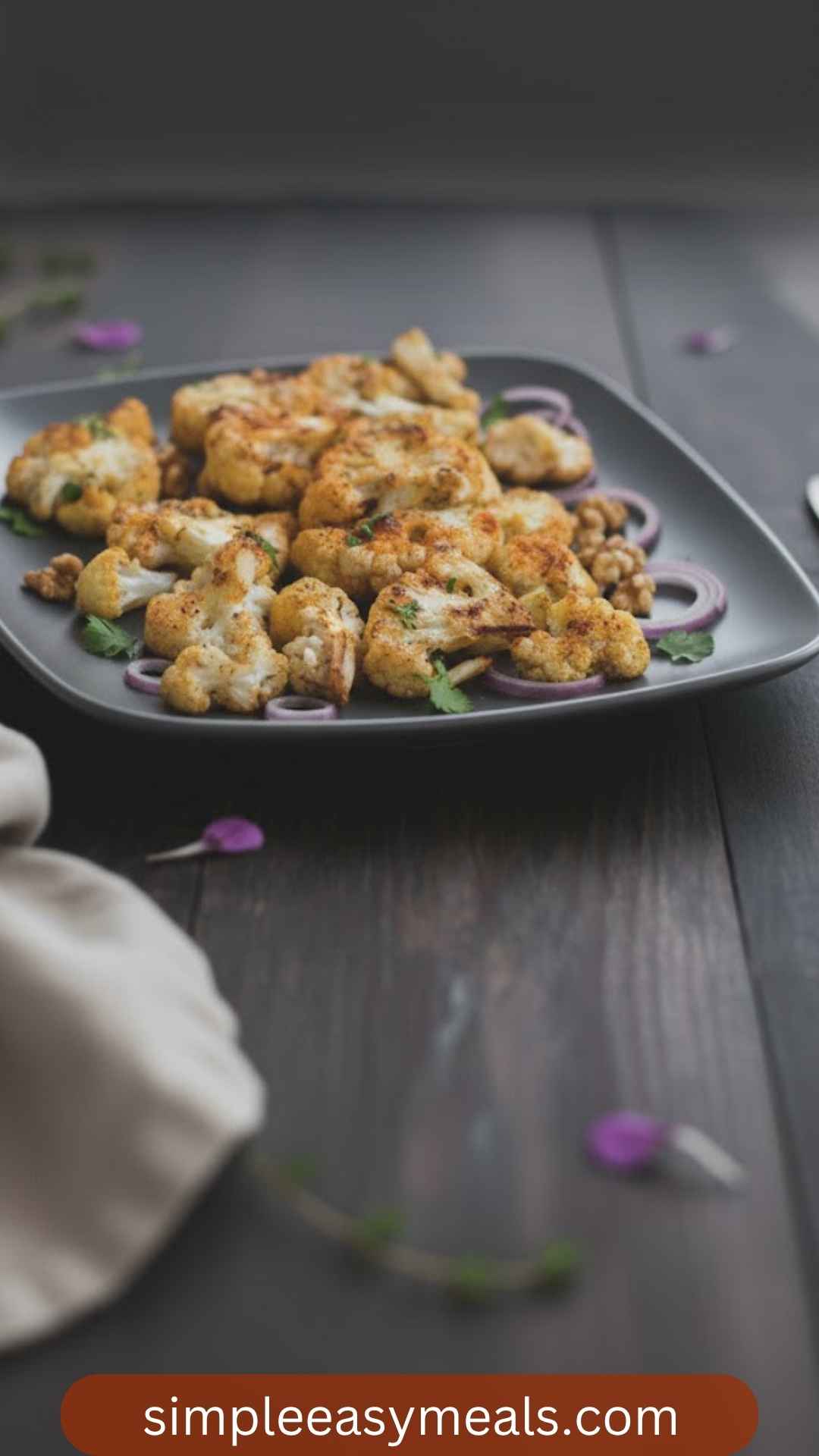
Conclusion
Roasted cauliflower isn’t just a meal; it’s an experience waiting to happen. Its savory, nutty flavor adds depth to any dish you put it with. And the best part? The possibilities are endless. From standalone side dishes to something fun in tacos or bowls, this recipe is a keeper.
In the kitchen, it’s all about experimentation and finding what works best for you. I encourage you to try roasted cauliflower, test the seasonings, and see how it becomes a staple in your cooking repertoire. Trust me; it’ll soon earn its rightful place in your weekly meal rotation. Give it a go, and watch your friends and family rave about it, just like I once did! Happy roasting!
You’ll also like the following Recipes!
Roasted Cauliflower – Simple Easy Meals
A few years ago, I stumbled upon roasted cauliflower during a dinner party. It was love at first bite. This dish isn’t just another vegetable side; it's a versatile superstar that can grace any table. Whether you’re hosting an elegant soirée or simply looking for a comforting meal, roasted cauliflower fits the bill.
I had an epiphany that day, realizing just how transformative this humble vegetable can be. The nutty flavor that emerges from roasting, the satisfying texture, the easy preparation—it was a revelation! Let’s explore what makes roasted cauliflower so special.
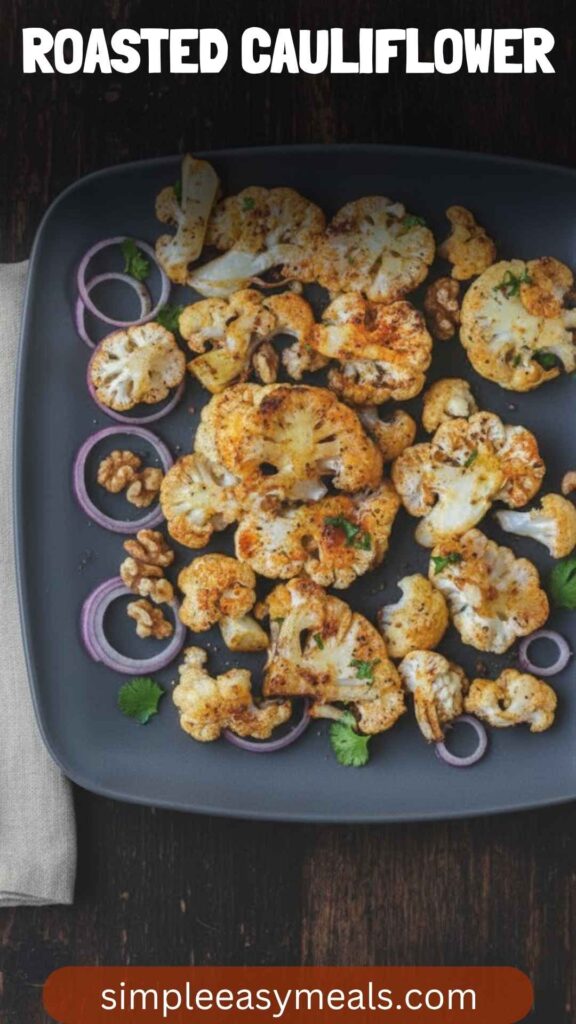
Ingredients
Instructions
Step 1: Preheat the Oven
-
Start by preheating your oven to 425°F (220°C). A hot oven is crucial for roasting cauliflower to achieve that delicious caramelization. It’s the first step towards goodness!
Step 2: Prepare the Cauliflower
-
While the oven heats up, grab your cauliflower. Cut it into small florets or thick "steaks," depending on your preference. Make sure they’re roughly the same size for even cooking.
Step 3: Mix Seasonings
-
In a large bowl, combine olive oil, melted butter, salt, pepper, garlic powder, smoked paprika, dried thyme, and lemon zest. This blend is where the magic begins! Ensure it’s mixed well, because you want those flavors to coat every bit of cauliflower.
Step 4: Toss and Coat
-
Add the cauliflower florets to the bowl and toss them in the seasoning mixture. Use your hands if that’s what it takes to ensure even coverage. Don’t be shy—get in there!
Step 5: Arrange on a Baking Sheet
-
Line a baking sheet with parchment paper for easy cleanup. Spread the seasoned cauliflower in a single layer on the sheet. This allows for optimal roasting and ensures that the pieces don’t steam.
Step 6: Roast to Perfection
-
Place the baking sheet in the oven and let the cauliflower roast for about 25-30 minutes. Halfway through, stir the cauliflower for even cooking. Keep an eye on it—the goal is to achieve a golden brown hue.
Step 7: Serve and Enjoy!
-
Once roasted, take the cauliflower out of the oven and let it cool slightly. You can serve it warm or at room temperature. Garnish with fresh herbs or a sprinkle of extra lemon zest for an added burst of flavor.
Nutrition Facts
Servings 6
- Amount Per Serving
- Calories 70kcal
- % Daily Value *
- Total Fat 4g7%
- Total Carbohydrate 8g3%
- Dietary Fiber 3g12%
- Protein 3g6%
* Percent Daily Values are based on a 2,000 calorie diet. Your daily value may be higher or lower depending on your calorie needs.
Note
- Choose Fresh Cauliflower: Look for firm, tightly packed florets with no browning. Freshness makes a difference.
- Don’t Overcrowd the Pan: Spread the florets out. Overcrowding leads to steaming instead of roasting, and we want that roasted crunch!
- Experiment with Seasonings: Feel free to play with spices. Cumin, turmeric, or even a sprinkle of Parmesan can create exciting variations.
- Use High-Quality Olive Oil: The oil is key. A good extra virgin olive oil enhances flavor and offers health benefits.
- Check for Doneness: Oven temperatures can vary, so start checking for doneness around 20 minutes. You’re looking for fork-tender pieces with some char.


